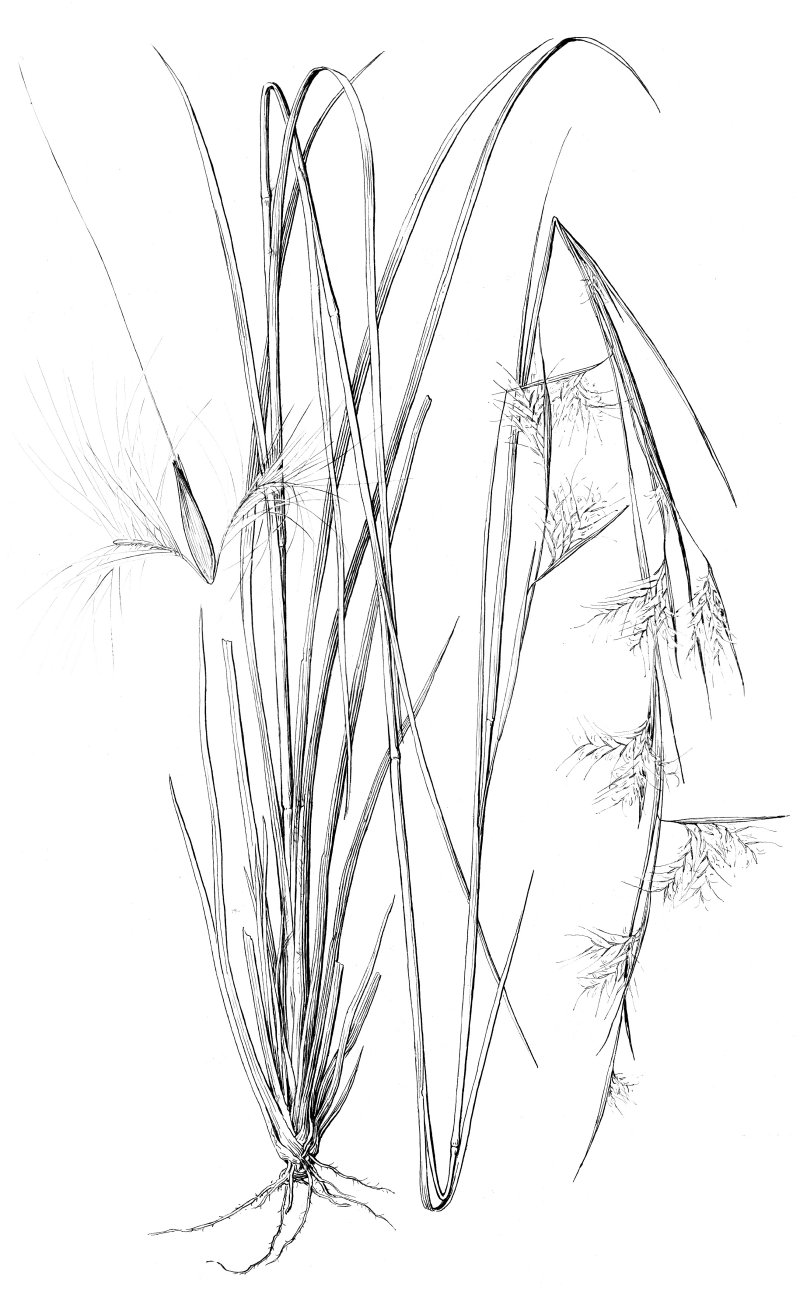
Andropogon virginicus L. Broomsedge Habit: Tufted perennial. Culms: Erect, 50-100 cm. tall, rather slender, usually in rather small tufts, the upper two thirds freely branching. Blades: Flat or folded, 30-40 cm. long, 2-5 mm. wide, pilose at the base above, slightly rough especially on the margins. Sheaths: Shorter than the internodes, glabrous or more or less pilose along the margins, at least the lower ones, upper leaf-sheath or spathe usually exceeding the racemes, lower compressed, keeled. Ligule: Membranous, round, short, strongly ciliate. Inflorescence: Elongate, narrow, the 2-4 racemes 2-3 cm. long, partly included and shorter than the inflated, tawny to bronze spathes, rachis very slender, flexuous, long-villous, bearing spikelets in pairs at each node, one sessile and perfect, the other pedicellate and rudimentary. Spikelets: Sessile spikelet 3-4 mm. long, narrow; pedicel longer than the sessile spikelet, long-villous, its spikelet obsolete or rarely present as a small scale. Glumes: Of fertile spikelet subequal, the first dorsally flattened, with a strong nerve near each margin, the midnerve faint, second glume keeled above. Lemmas: First lemma empty, hyaline; fertile lemma membranous or hyaline, with a delicate, straight awn 1-2 cm. long. Stamen: 1 Habitat: Open ground, sterile hills, sandy soil. September-October. Kansas Range: Scattered in the east fourth. Use: Forage, but of little value. Synonyms: Andropogon virginicus L. var. virginicus Andropogon virginicus L. var. tetrastachyus (Ell.) Hack.